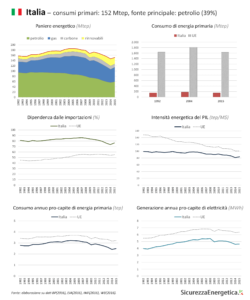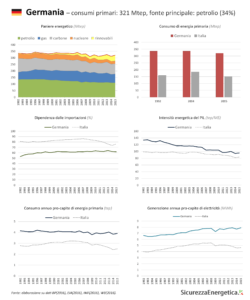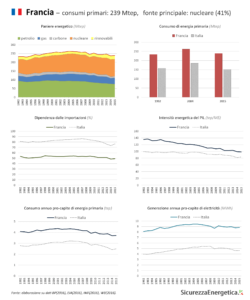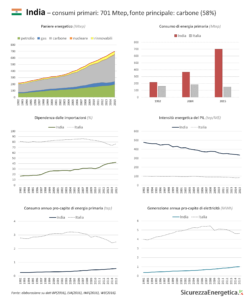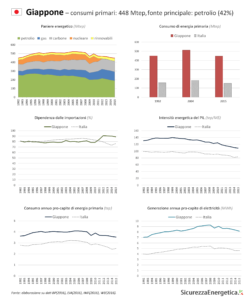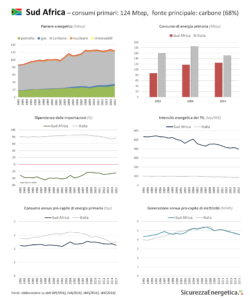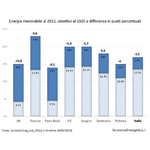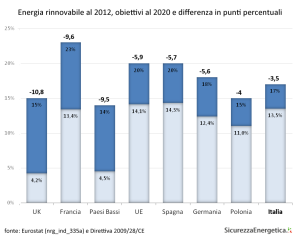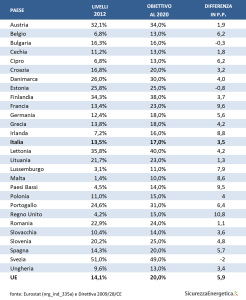 L’Autorità per l’energia britannica (OFGEM) ha appena pubblicato un report al governo sulla sicurezza dell’approvvigionamento di gas.
L’Autorità per l’energia britannica (OFGEM) ha appena pubblicato un report al governo sulla sicurezza dell’approvvigionamento di gas.
Il report parte dalla considerazione che la crescente dipendenza del mercato britannico dalle importazioni di gas espone a rischi per la sicurezza energetica del Paese.
Secondo OFGEM, i contratti interrompibili dei grandi consumatori – che coprono il 50% della domanda – e la pur contenuta capacità di stoccaggio rendono altamente improbabile un’interruzione delle forniture ai clienti medio-piccoli. Per arrivare a una riduzione delle forniture ai clienti domestici in pieno inverno, i mercato britannico dovrebbe perdere in un colpo oltre il 60% della capacità di importazione (e le stime sono conservative, perché si basano su una volontaria sottostima della capacità di erogazione da stoccaggio disponibile).
Nonstante l’alta improbabilità, un’interruzione ai piccoli consumatori avrebbe conseguenze molto gravi, soprattutto perché occorrerebbero alcune settimane per ripristinare il servizio di distribuzione.
Il rischio è più grave se si guarda al settore elettrico. Il gas fornisce oltre il 40% della produzione britannica e basterebbe un’interruzione degli approvvigionamenti di gas nell’ordine del 25-30% in un momento di picco della domanda (sempre sottostimando lo stoccaggio, comunque) per portare alla necessità di razionare l’elettricità. In questo caso, tuttavia, i tempi di recupero sarebbero molto più veloci, con una limitazione dei danni, grazie al ricorso a impianti di generazione con fonti diverse.
Per quanto riguarda i prezzi, il mercato britannico è molto più esposto alle oscillazioni di prezzo rispetto agli altri grandi mercati europei a causa della forme contrattuali esistenti, più legate al breve periodo. Con l’attuale congiuntura, si tratta di un vantaggio, perché consente un basso costo della materia prima, ma la situazione potrebbe cambiare.
Il basso rapporto tra capacità di stoccaggio e consumi rappresenta un altro fattore di vulnerabilità, perché limita la capacità del sistema di isolare i consumatori finali dalle oscillazioni di prezzo. La bassa capacità di stoccaggio – circa 4 Gmc [NdR] – non rappresenta invece attualmente un problema in termini di sicurezza degli approvvigionamenti in virtù dell’alta capacità di produzione interna residua – oltre 40 Gmc annui -.
Per quanto riguarda le prescrizioni, OFGEM sottolinea la necessità di aumentare l’esposizione degli operatori nel garantire la sicurezza e di conseguenza il corretto funzionamento di meccanismi di mercato che consentano di prezzare la sicurezza dei consumatori finali.
OFGEM indivua anche alcuni ostacoli da superare:
- l’atteggiamento spesso orientato al breve periodo degli operatori (favorito dall’assetto regolatorio);
- i problemi di finanziamento delle infrastrutture a causa delle incertezze di mercato;
- la difficoltà dei meccanismi di mercato di scontare gli alti costi sociali di una grave interruzione;
- il rischio morale che gli oepratori si aspettino che sia il governo a farsi carico delle misure di sicurezza;
- il rischio che durante una crisi le misure di sicurezza di altri Paesi possano avere effetti negativi sulla sicurezza energetica britannica;
- il rischio geopolitico derivante dal fatto che la Russia e gli altri grandi produttori non-europei potrebbero non rispondere a soli incentivi di tipo economico.
Le altre prescrizioni di OFGEM sono un auspicio che prima di intervenire si facciano ulteriori valutazioni di impatto, che si trovi un equilibrio tra necessità di sicurezza e vantaggi di prezzo per i consumatori derivanti da un mercato libero, che si trovi il modo di incentivare una maggiore diversificazione della durata temporale dei contratti (a favore di quelli di lungo periodo).
Più in generale, il dato politico di fondo del report OFGEM è un invito all’esecutivo britannico a valutate la possibilità di un maggiore intervento pubblico sul mercato, similmente a quanto fatto sugli altri grandi mercati europei.
Per quanto un intervento pubblico a tutela della sicurezza energetica sia necessario, speriamo che David Cameron si ricordi di essere dello stesso partito di Lady Thatcher.






